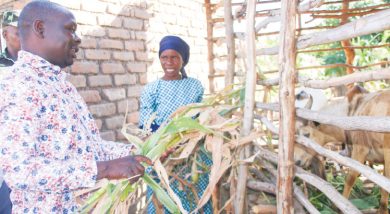Saving trees amid food crisis
For over a decade, Harry Dzowa has been selling charcoal along Machinga-Zomba Road. For the 50-year-old and his six children, the illegal trade in forest products remains their mainstay of survival despite massive deforestation and worsening effects of climate change.
“This is our bread and butter. I have to pay school fees for my children,” Dzowa says. “Government should find better ways of protecting forests instead of chasing us as criminals.”
Government recently ordered soldiers to patrol major forests, while charcoal producers usually have their illicit product and tools confiscated.
In Blantyre, Titus Bwande, 45, says he will stop producing and selling charcoal when he gets an alternative source of income.
“Banks only offer loans to the rich. What then do they expect us to do? We have families to feed and it is this illegal business that keeps us going,” he says.
Wood and charcoal are the preferred fuel for cooking in the country, with only one in 10 Malawians having access to electricity.

Loggers illegally clear almost 160 square kilometres of forest each year just to meet the demand for charcoal, the World Bank estimates.
But government has signed up to Reducing Emissions from Deforestation and Forest Degradation (Redd+) to save endangered forests.
Redd+, a climate change mitigation intervention by countries that are party to the United Nations Framework Convention on Climate Change (UNFCCC, offers developing countries incentives to keep their forests standing.
It envisions member States receiving payments in proportion to the results of actions to reduce forest carbon emissions.
The Malawi Redd+ Programme (MRP) started in 2012. The national action plan launched in 2014 expires in 2019.
The five-year action plan targets completion of the national Redd+ strategy next year. It highlights the country’s “no-regrets” approach towards reducing emissions from deforestation and forest degradation.
The programme offers an opportunity to effect transformational changes in the management of forest and natural resources that enhance livelihoods of nearly 90 in 100 Malawians irrespective of the availability of carbon financing, government says.
But how can we expect the poor to conserve forest resources when their survival depends on the same endowment?
“The major problem is that we have nothing else to do,” says Robin Kwale, 33. “We have families, but nowhere to run and nothing else to do. We have to cut the trees to feed our families.”
The charcoal maker narrated his story while looking at the remains of a chopped Mango tree about to be burnt.
But environmental analyst Godfrey Mfiti underscores the need for projects that can protect the environment.
Catastrophes resulting from deforestation cost the country more millions than the visible benefits Kwale and his colleagues get, he says.
“Malawi is poor and some people earn a living through charcoal and firewood selling, but there are many other ways to rescue people from poverty,” Mfiti says.
Poverty should not take the country to a bleak future where people are to suffer manmade disasters, he argues.
The country has not yet recovered from the 2015 floods which killed hundreds and ripped homes, roads, bridges and schools.
But Redd+ goals in Africa frequently suffer due to competing development aims, especially agriculture, mining and energy sectors.
But a new study on deforestation and soya production south of the Amazon shows agricultural expansion is increasingly occurring in areas that have already been deforested or degraded.
This is great news for forests: countries can feed the world’s growing population while retaining crucial forest resources.
But what can small-scale farmers do?
In Malawi, farmers are increasingly integrating forestry and forest resources into their crop rotations to improve yields and soil health amid crippling climate change.
Reuters reports that some Malawian farmers are intercropping trees with maize to provide moisture-preserving shade for the crop. Others bury tree leaves in the ground to improve soil fertility and moisture retention.
Some farmers are using leaves from fast-growing native trees as fertilisers, alleviating the burden of purchasing expensive chemical fertilisers.
This increases the farmer’s net income.
Innovative ‘agro forestry’ strategies can help make existing agricultural land more productive and protect forests.
Not only do they conserve forest, but also help bolster food security and improve rural livelihoods. n





